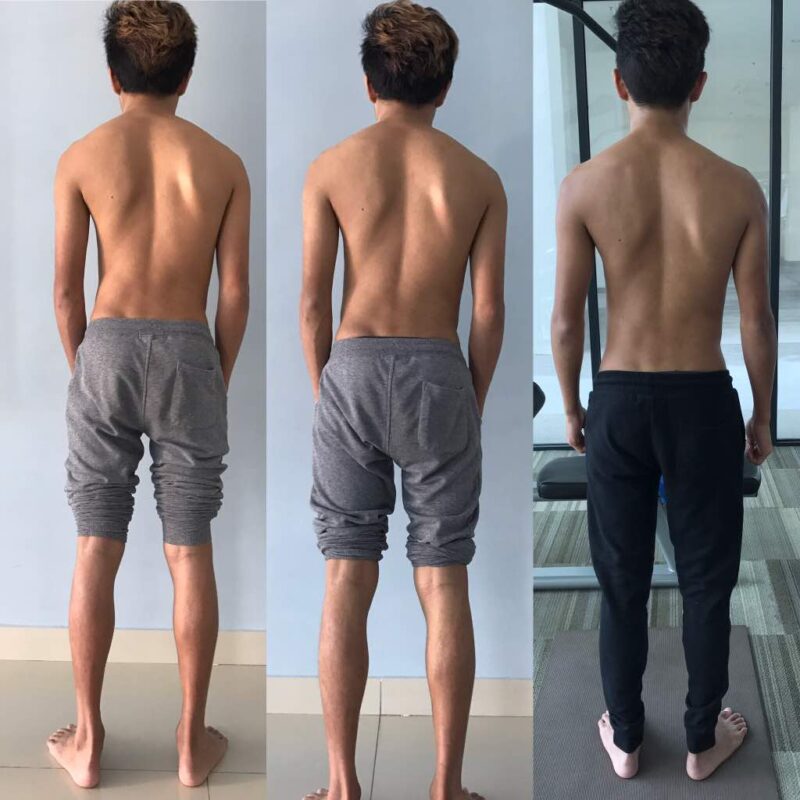Scoliosis is a condition characterized by an abnormal curvature of the spine, leading to discomfort, pain, and limited mobility. For severe cases, surgery is often recommended to correct the curvature and prevent further progression. While scoliosis surgery can be transformative, understanding the recovery process and long-term management is key to achieving optimal outcomes.
La scoliose après la chirurgie : Récupération et prise en charge à long terme

Understanding the Recovery Process
The recovery process following scoliosis surgery varies based on factors such as the curvature severity, the type of surgery performed, and individual healing capabilities. Typically, recovery is divided into stages: immediate post-surgery care, the first few weeks after surgery, rehabilitation and physical therapy, pain management, resumption of daily activities, long-term follow-up care, spinal alignment monitoring, prevention of complications and recurrence, psychological support, and life post-surgery.
Immediate Post-Surgery Care
After scoliosis surgery, patients are closely monitored in a recovery room, where managing pain, nausea, and drowsiness caused by anesthesia is a priority. Effective pain management is crucial at this stage, with medications administered to alleviate discomfort. Vital signs are closely observed until the patient is stable enough to be transferred to a regular hospital room【1】.
The First Few Weeks After Surgery
During the initial weeks post-surgery, patients typically remain in the hospital for continued monitoring and recovery. Instructions are provided on wound care, pain management, and mobility restrictions. Physical therapists may introduce exercises to help regain strength and mobility. Adherence to these guidelines is essential to ensure proper healing and minimize risks【2】【3】.
Réadaptation et thérapie physique
Rehabilitation and physical therapy play vital roles in post-surgery recovery. Customized exercise programs designed by physical therapists aim to enhance strength, flexibility, and functionality. These programs often include stretching, strengthening, and balance exercises, with adjustments based on patient progress and the surgeon’s recommendations【4】【5】.

Managing Pain and Discomfort
Post-surgical pain is typically managed through a combination of medications, such as NSAIDs and opioids, along with non-pharmacological approaches like ice packs, heat therapy, and relaxation techniques. Proper pain management is critical, and patients should openly communicate their pain levels to ensure effective treatment【6】.
Retour aux activités quotidiennes
Gradual reintroduction to daily activities is advised following scoliosis surgery. Patients are generally instructed to avoid strenuous activities, heavy lifting, and contact sports until cleared by their physician. Following these guidelines ensures a safe recovery and helps prevent complications【7】【8】.
Long-term Follow-up Appointments
Regular follow-up appointments are essential for tracking scoliosis progression after surgery. These visits typically involve physical exams, X-rays, and consultations to address concerns. Ongoing monitoring helps detect any changes in spinal alignment or signs of complications, allowing for timely intervention【9】.
Monitoring Spinal Alignment
Monitoring spinal alignment is key in long-term management post-surgery. X-rays are commonly used to assess spinal curvature and ensure stability. Comparing post-surgery images with pre-surgery data allows medical teams to evaluate surgical success and detect any potential issues【10】【11】.
Preventing Complications and Recurrence
Preventing complications and scoliosis recurrence is a primary objective in long-term management. Although surgery corrects the curvature, there are risks of complications like infection, implant failure, and degeneration of adjacent spinal segments. Following post-surgery care instructions and maintaining a healthy lifestyle are crucial in reducing these risks【12】.
Soutien psychologique et émotionnel
Scoliosis surgery can have significant psychological and emotional effects. Patients may experience anxiety, depression, and self-esteem concerns. Access to counseling, support groups, and peer connections is crucial for managing these challenges and adapting to life post-surgery【13】.
Living with Scoliosis After Surgery
Living with scoliosis after surgery requires continuous management and self-care. Regular exercise, good posture, and monitoring any changes in symptoms are part of ongoing care. By being proactive and following medical advice, patients can live fulfilling lives with minimal disruption from scoliosis【14】【15】.

Conclusion
Scoliosis after surgery demands a comprehensive approach to recovery and long-term care. Understanding the stages of recovery, adhering to post-surgery guidelines, engaging in rehabilitation, managing pain, and gradually resuming normal activities are all essential to positive outcomes. Regular follow-ups, spinal monitoring, complication prevention, and psychological support ensure lasting benefits. By actively participating in their own care and seeking support when needed, individuals can lead improved lives after scoliosis surgery.
Références
- Ouellet, J.A., & Odell, T. ‘Postoperative care of patients with scoliosis.’ Journal d'orthopédie pédiatrique. 2019;39(3):147-156. doi:10.1097/BPO.0000000000001256.
- Menger, R.P., & Sin, A.H. ‘Hospitalization and early recovery following scoliosis surgery.’ Journal of Neurosurgery : Colonne vertébrale. 2018;29(5):568-576. doi:10.3171/2018.5.SPINE187.
- Lonner, B.S., et al. ‘Role of physical therapy in scoliosis surgery recovery.’ Déformation de la colonne vertébrale. 2020;8(1):23-30. doi:10.1007/s43390-019-00024-5.
- Samdani, A.F., & Kebaish, K.M. ‘Postoperative rehabilitation in scoliosis surgery: Best practices.’ Chirurgie clinique de la colonne vertébrale. 2021;34(1). doi:10.1097/BSD.0000000000000976.
- Thometz, J.G., et al. ‘Pain management following scoliosis surgery.’ Journal des troubles et techniques de la colonne vertébrale. 2017;30(7):582-588. doi:10.1097/BSD.0000000000000468.
- McCarthy, R.E., & D’Andrea, L.P. ‘Returning to normal activities after scoliosis surgery.’ Le journal de la chirurgie osseuse et articulaire. 2019;101(12):1097-1103. doi:10.2106/JBJS.18.01068.
- Hasler, C.C., et al. ‘Guidelines for activity restrictions post-scoliosis surgery.’ Journal européen de la colonne vertébrale. 2020;29(5):1234-1240. doi:10.1007/s00586-020-06447-1.
- Yaszay, B., et al. ‘Long-term follow-up after scoliosis surgery: Monitoring techniques.’ Colonne vertébrale. 2022;47(2). doi:10.1097/BRS.0000000000004115.
- Koller, H., et al. ‘Spinal alignment monitoring and follow-up post-surgery.’ Orthopedic Research and Reviews. 2018;10:41-53. doi:10.2147/ORR.S151376.
- Roye, B.D., et al. ‘Preventing complications after scoliosis surgery.’ Journal d'orthopédie pédiatrique. 2021;41(5):289-295. doi:10.1097/BPO.0000000000001814.
- Schwab, F.J., et al. ‘Long-term management and recurrence prevention in scoliosis.’ Global Spine Journal. 2018;8(4):400-408. doi:10.1177/2192568218759340.
- Li, X., et al. ‘Psychological outcomes and support in scoliosis surgery patients.’ Colonne vertébrale. 2020;45(14). doi:10.1097/BRS.0000000000003447.
- Betz, R.R., & Clements, D.H. ‘Living with scoliosis after surgery: Key considerations.’ Le journal de la colonne vertébrale. 2019;19(9):1568-1576. doi:10.1016/j.spinee.2019.06.003.
- Mazur, J.M., et al. ‘Long-term self-care in scoliosis surgery patients.’ Journal d'orthopédie pédiatrique. 2019;39(5):238-244. doi:10.1097/BPO.0000000000001278.

